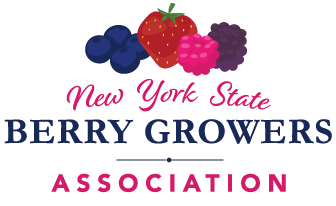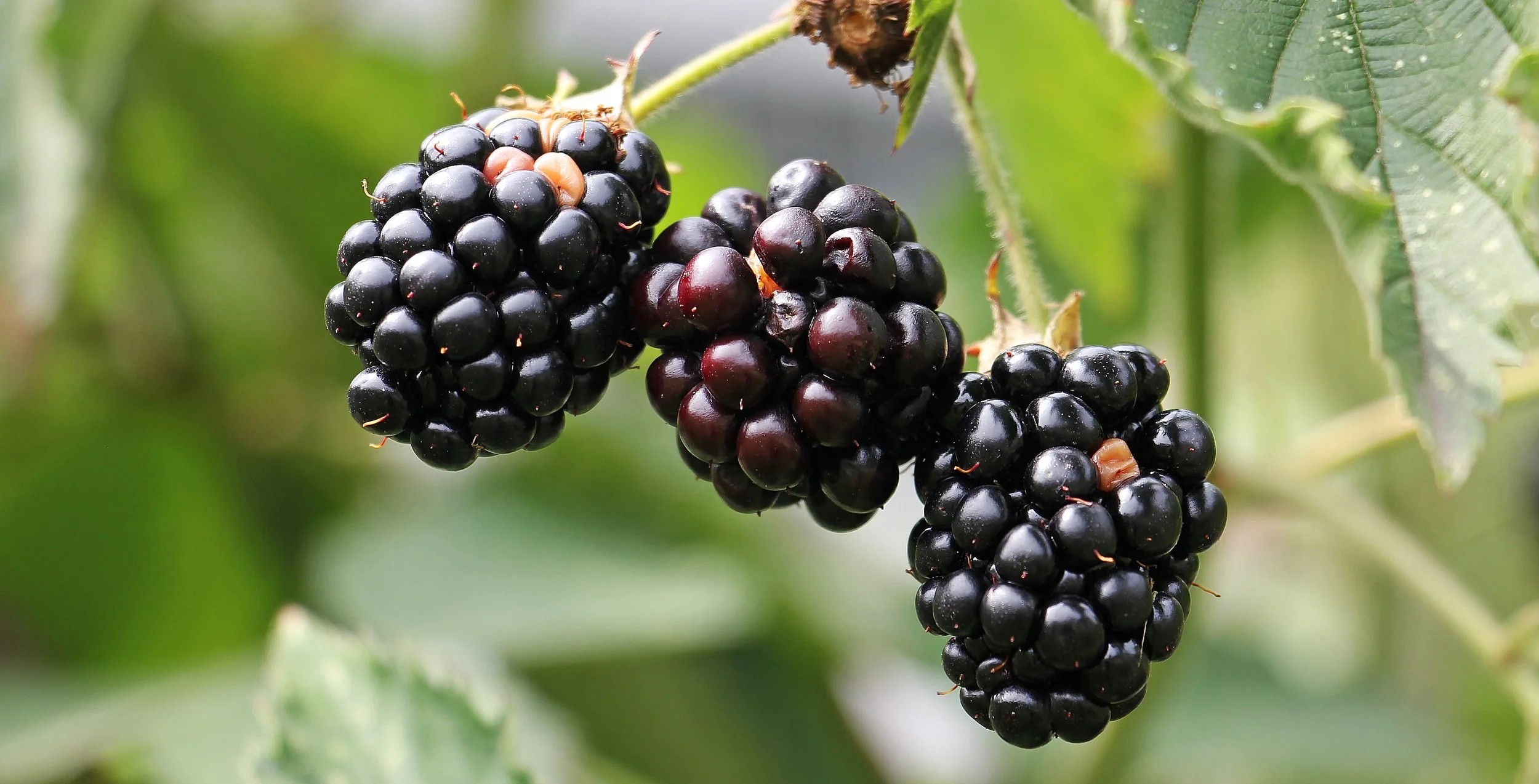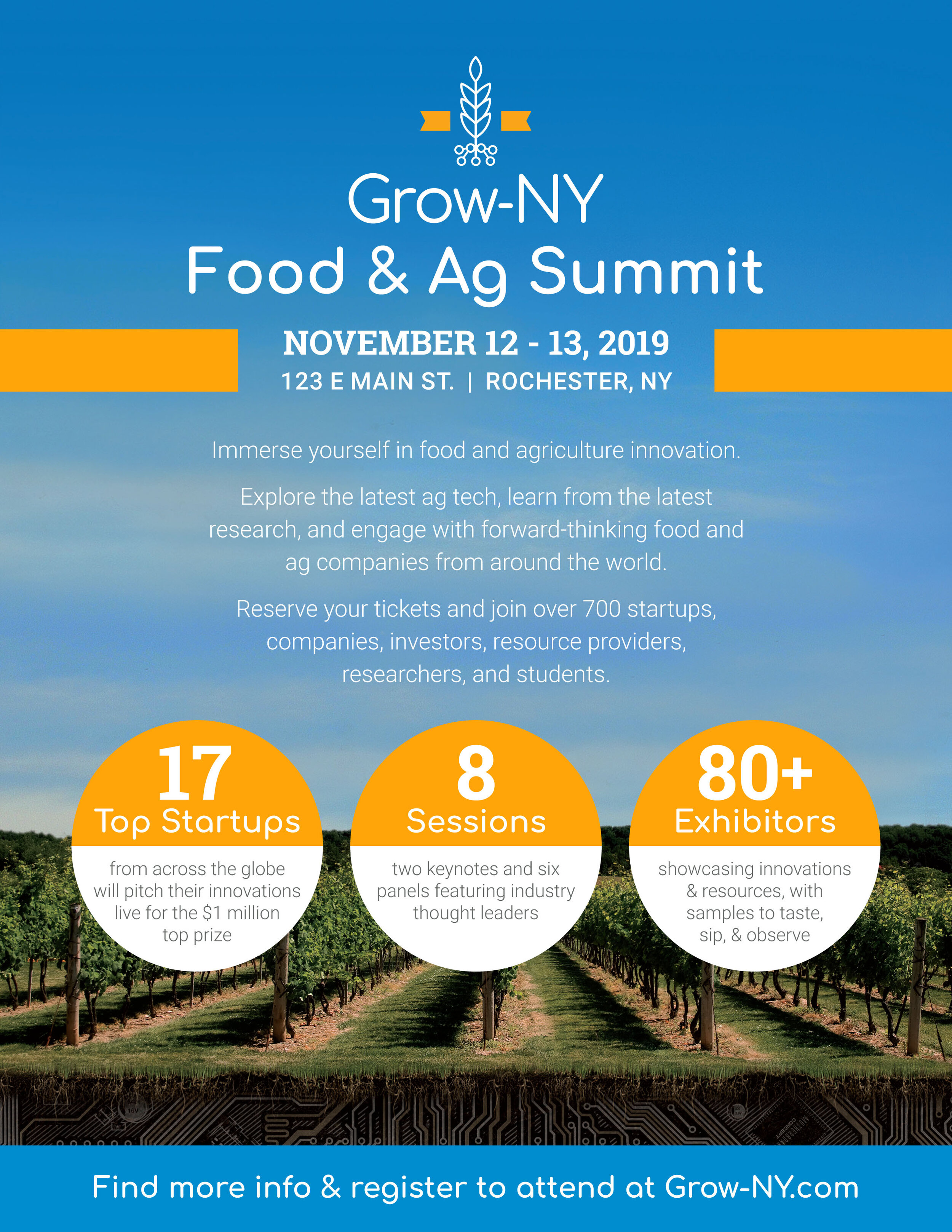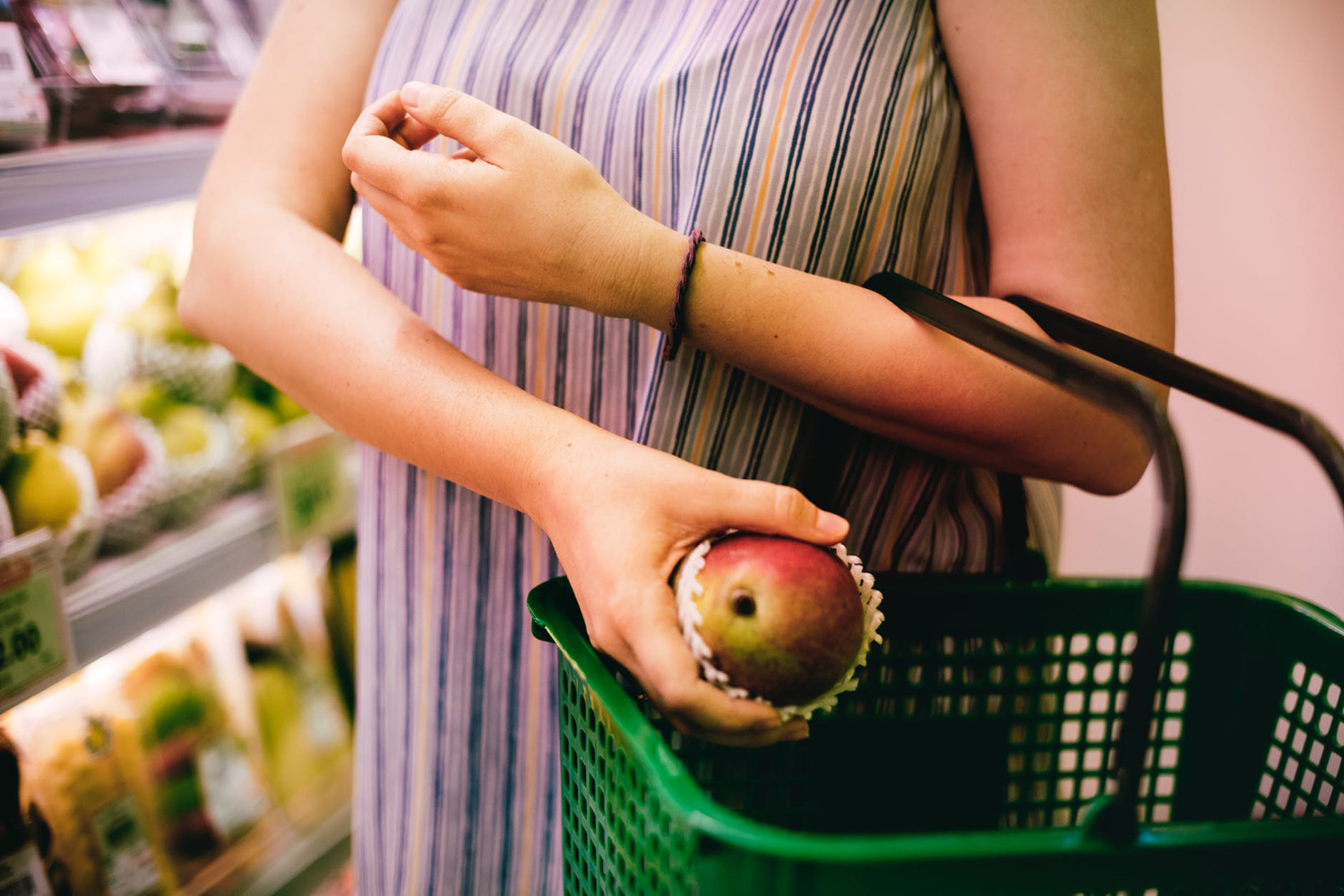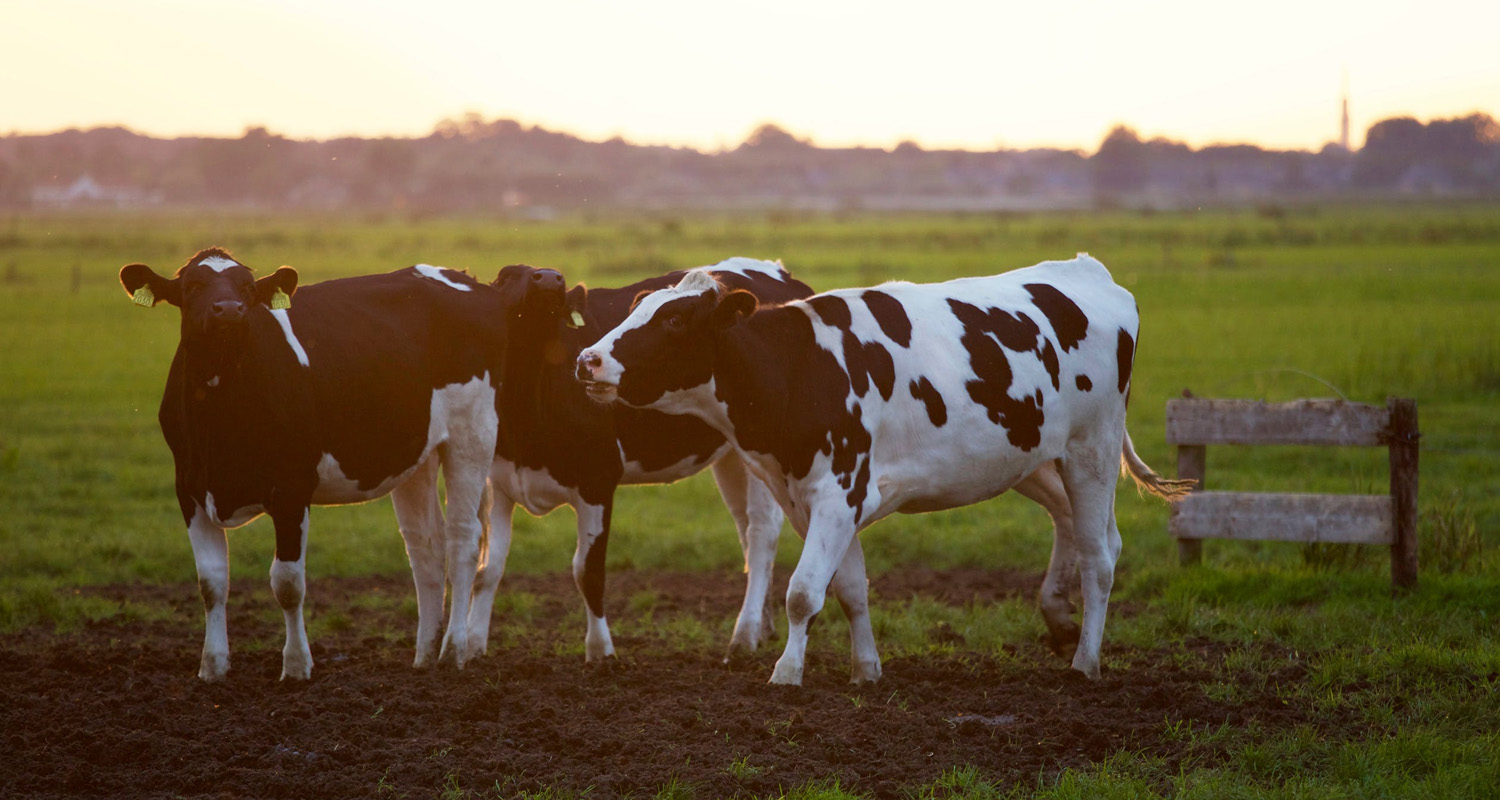We’re partnering with the experts art Cornell CCE to bring you the region’s first-ever blueberry intensive, an in-depth look at blueberry growing techniques, pests and diseases, marketing and other business topics, and an afternoon demonstration on working farms. Mark your calendar for March 5 in Ellicottville in Cattaraugus County, and March 14 in Millbrook in Duchess County.
Here are the complete agendas for both workshops; scroll down to view full details.
Blueberry Intensive Workshop—Ellicottville
March 5, 2019
Cornell Cooperative Extension of Cattaraugus County
28 Parkside Drive, Ellicottville, New York
Sign up here.
8:30–9:00 am: Registration—DEC credit sign-up
9:00–9:10 am: Welcome/introductions
Esther Kibbe, CCE Harvest NY and/or Laura McDermott, CCE ENYCHP
9:10–9:30 am: Considerations when choosing and prepping a site for blueberry production,
Kathy Demchak, Berry Specialist, Pennsylvania State University
Site selection and preparation is one of the most important aspects in terms of long-term success, as it will impact overall plant growth, pest pressure, weed management, and fruit quality.
9:30–10:00 am: Blueberry diseases of note
Dr. Kerik Cox, Plant Pathologist, Cornell University
Dr. Cox will outline the major diseases that blueberry growers in Western NY need to be aware of. He’ll discuss the most successful management strategies, including conventional fungicide programs and organically appropriate approaches.
10:00–10:30 am: Managing blueberry insect pests
Dr. Dara Stockton, Entomology Research Assoc., Cornell University
Dr. Stockton will discuss major blueberry insect pests including cranberry and cherry fruit worm, blueberry maggot and Spotted Wing Drosophila. Pests like scale that may increasing due to more aggressive spray programs will also be discussed.
10:30–10:40 am: Break
10:40–11:10 am: Using the NEWA blueberry pest and disease models to your best advantage
Dr. Juliet Carroll, Fruit IPM Specialist, NYS IPM
Dr. Carroll will lead growers through a hands-on discussion of the NEWA pest models that will allow growers to better time and hopefully reduce sprays while still getting good control of pests.
11:10–11:30 am: Alternative options for markets
Cheryl Thayer, CCE Harvest NY
Farm to school, value added, nutraceuticals, organic wholesale—market options are plentiful for blueberries.
11:30 am–12:15 pm: Berry crops profitability tool—knowledge is power!
Dr. Miguel Gomez, Agriculture Economist, Cornell
12:15–1:00 pm: Lunch (provided)
1:00–1:20 pm: Making it work at Duda’s Blues Berry Farm
David Duda, owner, Duda’s Blues, Machias, NY
1:20–2:10 pm: Blueberry nutrition
Kathy Demchak, Berry Specialist, Pennsylvania State University
Feeding blueberries is an important and challenging aspect of blueberry culture. Acidity of soil and water plays a huge role, so a discussion about acidification will be part of the presentation. Plants in good vigor are much better at resisting insect and disease pests.
2:10–2:30 pm: Post-harvest handling—reducing pest damage and improving fruit quality
Laura McDermott, CCE ENYCHP
One method of preserving fruit quality in harvested berries that may have had pressure from SWD is immediate and adequate chilling. Growers need to understand the importance of removing field heat and how to do it quickly with forced air cooling. Modified atmosphere packaging will also be discussed along with helpful tools like a CoolBot.
2:30–3:00 pm: Pruning correctly throughout the life of the planting
Dr. Marvin Pritts, Horticulture, Cornell University
Like nutrition, good cultural care is important for an overall vigorous and pest durable plant. Pruning is as the plant moves through its juvenile period so that will be described.
3:00–3:30 pm: Transition to field—Great Valley Berry Patch
5608 Humphrey Rd., Great Valley, NY
Owner: Nadine Litchfield, 716-945-5221, gvberrypatch@gmail.com
3:30–4:00 pm: Pest scouting and weed management discussion
Dr. Marvin Pritts, with help from Laura McDermott and Esther Kibbe
Examining existing blueberries in the early season is the first thing to do for pest control. Looking for scale, mummyberry apothecia, and gall’s while plants are just breaking dormancy is crucial. Weed populations will begin to be evident as well. Herbicides are often used in the early pre-bud break time period for best results. Adding mulch should be done in the spring.
4:00–4:30 pm: Pruning demonstration
Dr. Marvin Pritts, with help from Laura McDermott and Esther Kibbe
This hands-on opportunity will provide continued discussion of the 2:30 afternoon session. We’ll address the differences in cultivars and pruning approaches, which will become more obvious as we look at plants. The use of a pneumatic pruner will be demonstrated, as well as more traditional tools.
4:30 pm: Workshop adjourns
Sign up for the Ellicottville workshop today!
Blueberry Intensive Workshop—Millbrook
March 14, 2019
Cornell Cooperative Extension of Dutchess County
2715 Route 44, Millbrook, New York
Sign up here.
8:30–9:00 am: Registration–DEC credit sign-up
9:00–9:10 am: Welcome/Introductions
Laura McDermott, CCE ENYCHP
9:10–9:30 am: Considerations when choosing and prepping a site for blueberry production
Gary Pavlis, Berry Specialist, Rutgers University
Site selection and preparation is one of the most important aspects in terms of long-term success, as it will impact overall plant growth, pest pressure, weed management, and fruit quality.
9:30–10:00 am: Blueberry diseases of note
Dr. Kerik Cox, Plant Pathologist, Cornell University
Dr. Cox will outline the major diseases that blueberry growers in Western NY need to be aware of. He’ll discuss the most successful management strategies, including conventional fungicide programs and organically appropriate approaches.
10:00–10:30 am: Managing blueberry insect pests
Dr. Dara Stockton, Entomology Research Assoc., Cornell University
Dr. Stockton will discuss major blueberry insect pests including cranberry and cherry fruit worm, blueberry maggot and Spotted Wing Drosophila. Pests like scale that may increasing due to more aggressive spray programs will also be discussed.
10:30–10:40 am: Break
10:40–11:10 am: Using the NEWA blueberry pest and disease models to your best advantage
Dr. Juliet Carroll, Fruit IPM Specialist, NYS IPM
Dr. Carroll will lead growers through a hands-on discussion of the NEWA pest models that will allow growers to better time and hopefully reduce sprays while still getting good control of pests.
11:10–11:30 am: Alternative options for markets
Lindsey Pashow, CCE Harvest NY
Farm to school, value added, nutraceuticals, organic wholesale–market options are plentiful for blueberries.
11:30 am–12:15 pm: Berry crops profitability tool—knowledge is power!
Dr. Miguel Gomez, Agriculture Economist, Cornell University
Understanding your expenses and how they compare to local averages and external competitors will help you strategize for future success. Bring some of your own data and learn how to utilize this brand new tool to your advantage. Growers are encouraged to bring a laptop to the class.
2:15–1:00 pm: Lunch (provided)
1:00–1:20 pm: Making it work at Samascott Farm
Jake Samascott, owner, Samascott Farm, Kinderhook, NY
1:20–2:10 pm: Blueberry nutrition
Gary Pavlis, Rutgers University
Feeding blueberries is an important and challenging aspect of blueberry culture. Acidity of soil and water plays a huge role, so a discussion about acidification will be part of the presentation. Plants in good vigor are much better at resisting insect and disease pests.
2:10–2:30 pm: Post-harvest handling—reducing pest damage and improving fruit quality
Laura McDermott, CCE ENYCHP
One method of preserving fruit quality in harvested berries that may have had pressure from SWD is immediate and adequate chilling. Growers need to understand the importance of removing field heat and how to do it quickly with forced air cooling. Modified atmosphere packaging will also be discussed along with helpful tools like a CoolBot.
2:30–3:00 pm: Pruning correctly throughout the life of the planting
Dr. Marvin Pritts, Horticulture, Cornell University
Like nutrition, good cultural care is important for an overall vigorous and pest durable plant. Pruning is as the plant moves through its juvenile period so that will be described.
3:00–3:30 pm: Transition to field—Mead’s Orchard
15 Scism Rd., Tivoli, NY
3:30–4:00 pm: Pest scouting and weed management discussion
Dr. Marvin Pritts, with help from Laura McDermott and Esther Kibbe
Examining existing blueberries in the early season is the first thing to do for pest control. Looking for scale, mummyberry apothecia, and gall’s while plants are just breaking dormancy is crucial. Weed populations will begin to be evident as well. Herbicides are often used in the early pre-bud break time period for best results. Adding mulch should be done in the spring.
4:00–4:30 pm: Pruning demonstration
Dr. Marvin Pritts, with help from Laura McDermott and Esther Kibbe
This hands-on opportunity will provide continued discussion of the 2:30 afternoon session. We’ll address the differences in cultivars and pruning approaches, which will become more obvious as we look at plants. The use of a pneumatic pruner will be demonstrated, as well as more traditional tools.
4:30 pm: Workshop adjourns
Sign up for the Millbrook workshop today!
For questions about programming, contact: Esther Kibbe, ejp9@cornell.edu; or Laura McDermott, 518-791-5038, lgm4@cornell.edu.
For questions about registration, contact Karen Wilson, nysbga@gmail.com.
For questions the day of the event, contact Tamara Bacho, 716-699-2377, tsb48@cornell.edu.
